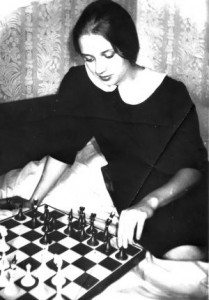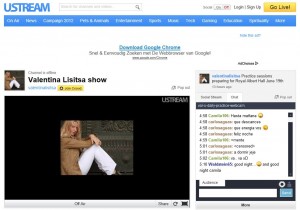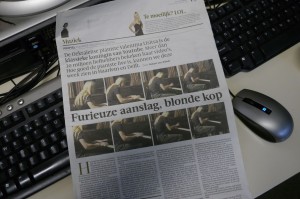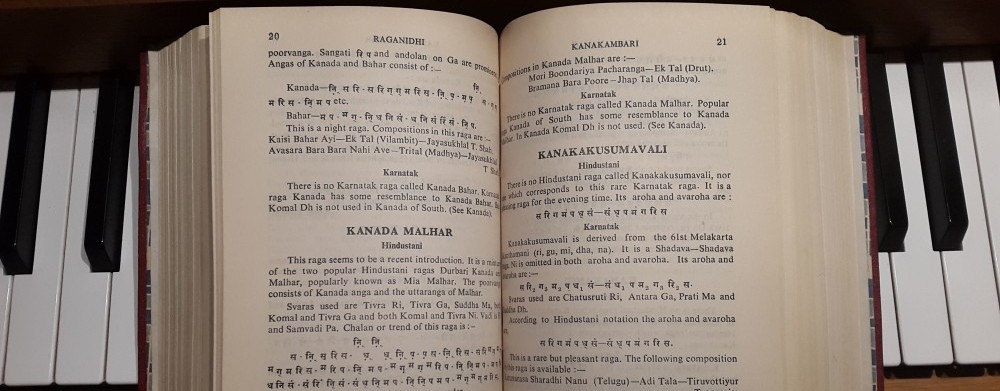Joey Alexander, an 11-year-old jazz sensation on piano, was discovered in Jakarta, Indonesia, about three years ago. He then moved with his parents to New York, where he’s become a well known name in the jazz scene. Now the jazzpiano prodigy has just released his debut album ‘My Favorite Things’.
Tag Archives: United States
Watch my spectacular edit now in 1 go: perfect fit of Murnau’s ‘domestic’ Faust & Brock’s ‘export version’-score
My experiment concerned with adjusting the ‘domestic version’ of F.W. Murnau’s cinematic masterpiece Faust to Timothy Brock’s Faust-score – composed for the ‘export version – has reached its completion. The result of my effort can now be watched in one go on my YouTubechannel or here embedded below. Watch the spectacular result of an incredible amount of editing from my part and see how I’ve found a way to combine the ‘domestic cut’ of Murnau’s Faust with Timothy Brock’s brilliant score for another cut of Murnau’s Faust, the so-called ‘export version’, which is almost 10 MINUTES LONGER(!) than the original domestic cut. Do you recognise the challenge here? I succeeded in fitting Brock’s 115min export version score to the 106min domestic cut, by endlessly manipulating the duration of sequences in the domestic cut to get it sync with Brock’s score. As a consequence the adapted domestic cut became of course also 115 minutes! Imagine the job I had to do here, I had to edit in such a manner that the film should keep its natural pace and feel, while all the time I had to manipulate its speed. Sometimes sound and image were half a minute out of sync! Also, beyond the manipulation of speed/duration of sequences, the film is presented entirely in its original order. If one keeps that in mind I think the result of my effort is quite spectacular.
An adjusted domestic Faust with Timothy Brock’s score, my edit.
The Faust-cut for which Timothy Brock wrote his score, the ‘export version’.
On my YT-channel: Valentina Lisitsa talks about Rachmaninoff in video with all new material
Yesterday I published a new video of pianist Valentina Lisitsa, containing footage of not formerly published segments of an interview with her about – primarily – Rachmaninoff. I revisited and reconsidered some of my unpublished footage and photos, resulting in this new video, I thought it would be worthwhile to share it with the YouTube audience.

Still from my video (at 12’54”) and from another era it seems… Valentina as a youngster playing chess.
Earlier on I already produced and published on YouTube a documentary on Valentina’s Rachmaninoff Project with the London Symphony Orchestra. The fabulous recordings done in the Abbey Road Studios in 2009 and 2010 will be released later on in 2012 by Decca.
Pianist Valentina Lisitsa LIVE-streams her Royal Albert Hall concert-rehearsals
From Sunday June 3rd until Friday June 8th, YouTube’s most popular classical pianist, Valentina Lisitsa, is once more streaming her rehearsals LIVE via her Ustream-channel. To watch click here.

Valentina Lisitsa’s rehearsing is a not-to-be missed event for anyone with a serious interest in classical piano playing. From her home in North Carolina Valentina is rehearsing the scheduled programme of her upcoming Royal Albert Hall concert. She’s done this before and up till now she’s the only classical musician that I know of who’s sharing this preparation process in a live event for a worldwide audience. This is really fascinating and a unique opportunity to witness Valentina Lisitsa getting prepared for this major event on June 19th in London.
Piano sensation Valentina Lisitsa highlighted in dutch national press

(click on picture to enlarge)
An article on Friday 20 January 2012 about virtuoso classical pianist and YouTube-sensation Valentina Lisitsa in dutch national newspaper De Volkskrant. Valentina plays in The Netherlands, on Sunday 22 january 2012 in Delft and on Friday 27 January 2012 in Haarlem. The article in De Volkskrant shows that more and more big media finally begin to recognise what I (see my videos of Valentina on the web) and so many people on YouTube have known for years already… the unique stature and greatness of Valentina! 🙂
Valentina Lisitsa plays in Delft and Haarlem (The Netherlands) in January 2012
Good news for classical piano fans in The Netherlands. Valentina Lisitsa will play at least two recitals on dutch soil in January 2012:
on 22 January in Delft in theatre De Veste and on 27 January in the Philharmonie in Haarlem.
Shankar Tucker conquers a world audience via YouTube
I’ve been tracking down his uploads ever since I noticed his presence on YouTube early this year. Shankar Tucker is quite a phenomenal guy who has conquered a world audience by storm via his YouTubechannel in less than a year.
One of Shankar Tucker’s videos: Sapnon se Bhare Naina, with singer Rohini Ravada
Shankar Tucker plays the clarinet and a handful of other instruments and is interested in Indian Classical music and Indian folk music traditions. He incorporates these different styles with elements of Jazz, Electronic, Classical and Pop in his compositions. He spends a lot of time in India, where he studies Hindustani music on clarinet with flute-bansuri player Pt. Hariprasad Chaurasia. So far Shankar Tucker’s channel has featured collaborations with a bunch of great singers, such as Mahesh Vinayakram, Aditya Rao, Rohan Kymal, Vidya and Vandana Iyer and Nirali Kartik.
Here’s a link to the Hindustan Times writing about him in September 2011, a.o. things saying: “(..) a student of flautist Pandit Hariprasad Chaurasia at the Brindaban Gurukul in Mumbai, he has picked the clarinet over flute”. And then, so funny what follows: “(..) he disclosed in an interview to an Indian Express that his guru doesn’t even know about his fusion experiments.” :))
Experiment: adapting Murnau’s ‘domestic’ Faust to Timothy Brock’s ‘export version’-score
I’ve finished a very interesting experiment concerning the cinematic masterpiece Faust by German director Friedrich Wilhelm Murnau. In eight videos on my YouTubechannel, all embedded below here in this post, the so-called ‘domestic version’ of the film is shown in a slightly different way than usual. For a good reason. The videos show the result of an incredible amount of editing from my part, the result of an experiment to find a way to combine the ‘domestic cut’ of Murnau’s Faust with a brilliant score, written by Timothy Brock for another version of this film, the so-called ‘export version’.
The Faust-cut for which Timothy Brock wrote his score, the ‘export version’.
———————————————————————————————————–
Now, let me show you what I’ve done and explain a little bit further how and why I did this.
An adjusted domestic Faust with Timothy Brock’s score, my edit, Part 1
F.W. Murnau’s masterpiece-film Faust was released in 1926 and there are seven known versions of the film. The most well known version is the so-called ‘export version’ with english titles, that premiered in december 1926 in the USA. The duration of the export-version is 115 minutes and 30 seconds, while the newly discovered ‘domestic version’ a couple of years ago lasts 106 minutes, the domestic version being the original ‘German print’, the one with German titles that was shown at the time in German cinema theatres.
An adjusted domestic Faust with Timothy Brock’s score, my edit, Part 2
The export print is darker and softer, lacking the detail and clarity of the domestic version. Incidentally, the differences between the export and the domestic version are considerable. There’s no difference in terms of the overall structure of scenes and storyline, but the pacing and lengths of scenes often vary greatly and there are often striking differences in the order and in the composition of shots, the domestic version certainly being the superior of the two.
An adjusted domestic Faust with Timothy Brock’s score, my edit, Part 3
Timothy Brock’s orchestral score, written for the Faust-export version is a masterpiece, a fantastic accomplishment, perfectly keeping with the operatic and epic nature of the film. The way Brock uses operatic- and leitmotif-storytelling and storydeveloping techniques in his music for the export version of the film is absolutely stunning. But, as soon as Brock’s score is played with the domestic version, picture and sound are almost evrywhere out of sync, that is, numerous details and leitmotifs of the score then miss the point, lose their ‘iconic’ meaning and strength and simply can’t work as they do so perfectly in the export version.
An adjusted domestic Faust with Timothy Brock’s score, my edit, Part 4
Isn’t it possible then to combine Brock’s music with the greatly cut and very clear print of the domestic version? The answer is ‘no’ when you play the music along with the domestic film in its original speed. The answer is ‘yes’ (that is, in my opinion) if you manage to adjust the speed of numerous sequences of the domestic film. Only when countless sequences are ‘manipulated’ in terms of duration the music is able to work once more on the pictures (and vice versa) as it does in the export version.
An adjusted domestic Faust with Timothy Brock’s score, my edit, Part 5
Now, I took it as a challenge to try to make Brock’s music work as well in the domestic cut version of Faust and with this aim in mind I’ve edited the complete domestic Faust.* I think the result of my editing is quite interesting and after the changes I made in the duration of countless sequences – a time consuming job that requires precision and a lot of patience – I personally think this brilliant music now also works very well for the complete domestic version.
An adjusted domestic Faust with Timothy Brock’s score, my edit, Part 6
For me the result has been quite spectacular. I’ve tried to keep the duration manipulation of sequences within reasonable measures, in order to maintain as much as possible the natural look, tempo and feel of the domestic Faust version.
**
An adjusted domestic Faust with Timothy Brock’s score, my edit, Part 7
I use all of Brock’s score and all of Murnau’s film, there’s no material left out by me. Enough said, hope you’ll find this ‘experiment’ as fascinating as I do and I hope you’ll enjoy these videos.
An adjusted domestic Faust with Timothy Brock’s score, my edit, Part 8
* If one might argue there’s already published a 2dvd set of Murnau’s Faust that plays both the export version and the domestic version with Timothy Brock’s score, I’d like to remind one then once more that Brock wrote his score (in 1995) for the ‘export version’, a perfect fit. If, however, the (later discovered) domestic version is played with Brock’s score on that dvd edition – an excellent release btw, the best you can get of Murnau’s Faust – evrything is totally ‘out of sync’ almost all the time, from seconds to even halve minutes. So, the option given with that dvd-edition to play Brock’s score with the domestic version was useless, didn’t pay off in any way. Seeing the wrong outcome of Brock’s score with the domestic version on that dvd-edition made me wonder and think about an alternative and that’s how I must have come up with the idea for an experiment, the result of which can be seen in the eight edited domestic Faust-videos in this post.
** An important question to be asked and probably raised immediately by film experts and critics: does the film still look like Murnau’s Faust after my experiment? A valid question of course. Personally I think it still looks like Murnau’s film in evry way, despite the fact that I affected the original ‘domestic version’ by manipulating the duration of shots and scenes. Anyhow, my ‘adjusting’ method was inevitable to make Brock’s score work for the domestic cut.
A beautiful and meditative John Adams classic : Christian Zeal and Activity
A beautiful and meditative John Adams seventies-classic… Christian Zeal and Activity.
Art Tatum : a virtuoso in extremis
He had an encyclopedic memory for baseball statistics, otherwise he was at the piano. Art Tatum, a virtuoso in extremis.

